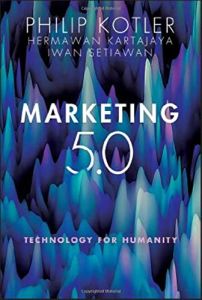Join getAbstract to access the summary!

Join getAbstract to access the summary!
Hermawan Kartajaya, Philip Kotler and Iwan Setiawan
Marketing 5.0
Technology for Humanity
Wiley, 2021
What's inside?
Next technology helps marketers design better customer experiences, navigate complexity and thrive amid uncertainty.
Recommendation
The marketing landscape is shifting, as digitalization goes widespread and next technologies go mainstream, say marketing experts Hermawan Kartajaya, Philip Kotler and Iwan Setiawan. They propose a new strategy – Marketing 5.0, which embraces next technology: artificial intelligence (AI), sensor technology, the internet of things (IoT) and natural language processing (NLP). Human mimicking technologies empower you to better create, communicate, deliver and enhance the value of your customer experience.
Summary
About the Authors
Marketing professor at Kellogg School of Management Philip Kotler is a Wall Street Journal Most Influential Business Thinker. MarkPlus, Inc.’s founder and executive chairman Hermawan Kartajaya is chairman of the Asia Council for Small Business and co-founder of the Asia Marketing Federation. Editor-in-chief of Marketeers Iwan Setiawan is chief executive officer of MarkPlus, Inc.
































Comment on this summary